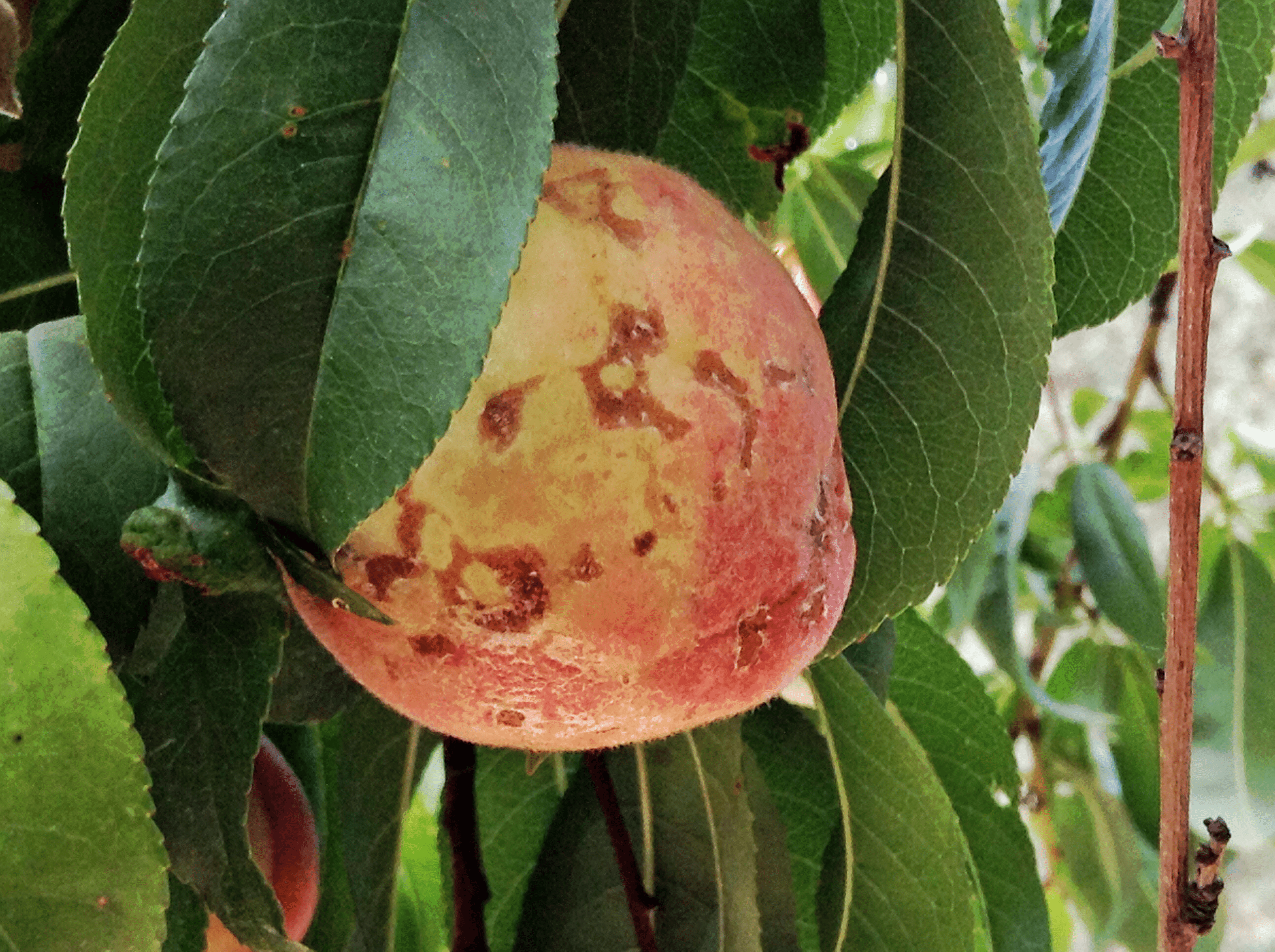Brown Spot On Peach Fruit: Learn About Peach Scab Treatment

Growing peaches in the home garden is a very rewarding and delicious experience. Unfortunately, peaches, like other fruit trees, are prone to disease and insect infestations and require a vigilant watch if one wishes to have a healthy harvest. Finding a brown spot on peach fruit may be an indication of a problem known as peach scab disease. To learn more about this issue and how to treat or prevent peach scab, keep on reading.
What is Peach Scab?
Fruit growers in the southeastern United States continuously battle with a fungus known as scab. Scab also occurs on apricots and nectarines. Peach scab disease affects the fruit, leaves, and young twigs. Damp conditions during the spring and early summer encourage leaf scab development. Low-lying, moist, and shady areas with poor air circulation are hit the hardest. The fungus that causes scab (Cladosporium carpophilum) overwinters in twigs that were infected in the previous season. Microscopic spores develop on twig lesions. Fungus growth is most rapid when the temperature is between 65 to 75 degrees F. (18-24 C.).
Symptoms of Peach Scab
Peach scab is most noticeable on the fruit during mid to late development. Small, round, olive-colored spots develop on the fruit close to the stem on the side that is exposed to the sun. As these spots enlarge, they merge and become odd-shaped, dark green or black blotches. Fruit that is severely infected may be stunted, misshapen, or cracked. Leaves are also susceptible and if infected, will have round and yellowish green spots on the underside. Diseased leaves may dry up and drop off prematurely.
Peach Scab Treatment and Prevention
To prevent peach scab, it is wise to avoid planting fruit trees in areas that are low-lying, shaded, or have poor air circulation and improper drainage. Keep diseased fruit, fallen twigs, and leaves picked up from the ground around the trees and maintain a regular pruning schedule to help keep the tree healthy. It is especially important to remove diseased material prior to the growing season. Wild or neglected fruit trees that are in the vicinity should also be removed. Keep an eye on fruit trees for twig lesions when pruning or thinning. Make a note of the location of any lesions so that you can monitor their activity. Also, watch the fruit carefully for any signs of fungus. If more than 20 fruit show symptoms of disease, management should be a priority. Peach scab treatment may include the use of fungicide sprays applied to infected trees every ten days from the time the petals fall to 40 days before harvest. Although finding a brown spot on peach fruit takes away from its beauty, it generally does not affect the quality of the fruit, as long as the infestation is not severe. Peel fruit before processing or eating it fresh.
Gardening tips, videos, info and more delivered right to your inbox!
Sign up for the Gardening Know How newsletter today and receive a free copy of our e-book "How to Grow Delicious Tomatoes".
-
 How To Make A Bouquet Garni Or Herb Bundle For Cooking
How To Make A Bouquet Garni Or Herb Bundle For CookingIf you’re a great cook, you may have made an herb bundle before. If this is a new idea, learn how to add sparkle and interest to your dish with a bouquet garni.
By Amy Grant
-
 ‘Coral Charm’ Peony Care For Sublime Semi-Double Peonies With Lush Salmon Pink Flowers
‘Coral Charm’ Peony Care For Sublime Semi-Double Peonies With Lush Salmon Pink FlowersPeonies are known for their soft baby pink or magenta tones, but if plushy coral blooms are your thing, here’s our guide to the ultimate ‘Coral Charm’ peony care
By Tonya Barnett